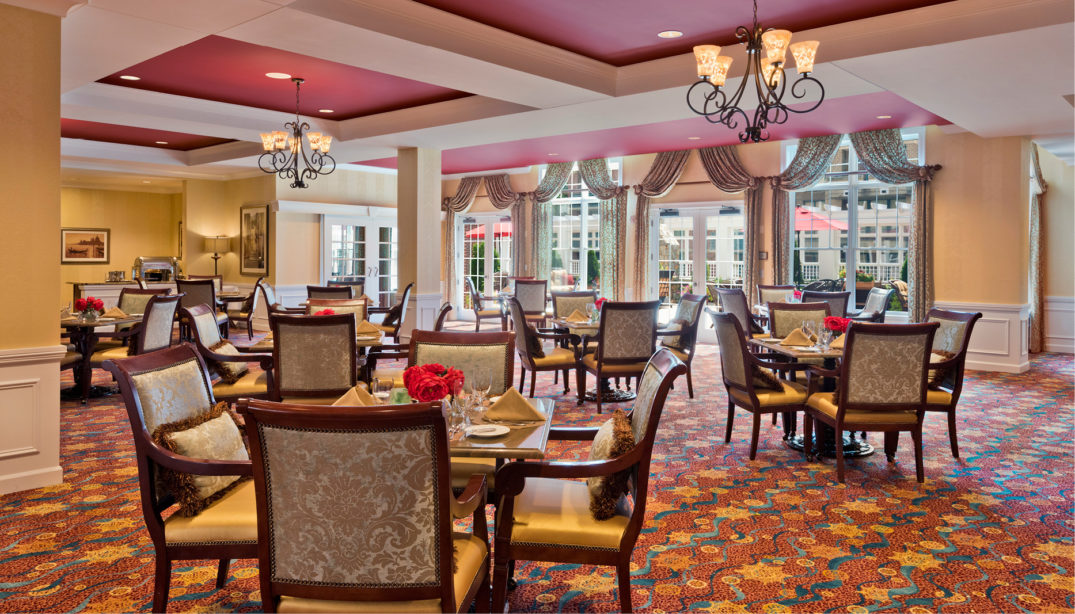Designed to integrate, urban-set senior living facilities upend public misconceptions
Part 3 of our 3-part series
<<Part 2: Local Flavor

Among a growing concern for how the nearly one million residents living in senior facilities across the U.S. may overburden resources, The Kensington’s residents reverse those notions by actively participating in the local economy.
Meanwhile, as the direct economic activities of approximately 29,000 assisted living communities reaches $30.2 billion ($72 billion including indirect contributions), Moseley Architects’ urban-set designs keep those impacts closer to home for commercial and retail districts, while compounding them due to steady flows of visitors.
Urban-set facilities also bring an influx of jobs, many of which lie in walking distance or along lines of public transportation. In Virginia alone, assisted and senior living facilities account for nearly 17,000 positions and $1.5 billion in total economic activity.
“We place our homes on traffic patterns of families so that it’s easy to drop in and see mom for breakfast, lunch or dinner,” says Harley Cook, a real estate developer and founding partner in The Kensington.
“You have everything around you to do, before and after you go and visit mom or dad,” adds Steve Ruiz, senior living sector leader.
Next door to The Kensington, a Hilton Garden Inn regularly houses overnight visitors. “We truly enjoy having The Kensington both as a neighbor and a business partner,” a hotel representative says. “The staff refer our hotel to their residents’ families and friends, which has been great for business.”
While the social and socioeconomic benefits of urban-set senior living facilities prove out, facilities like The Kensington are also partly a matter of shifting preferences among generations, suggests Dora Kay, an architect who focuses who specializes in senior living facilities.
“We can build the same thing all day long, but at some point you really need to build what is interesting to the people who are aging,” she explains. “I’m on the tail-end of the baby boomers, but I know the millennials behind me are going to want something totally different.”
The tides are turning, Ruiz suggests. While, “In some cases,” he says, “they don’t want us in their urban environment, because there’s a misconception that we’re going to clog up travel on the roads,” in the end, “The reality is, once you go in, the value of the land around those [facilities] goes up.”
As does the social diversity of communities, which experts agree is a benefit to society. “When we have more connections to older adults that aren’t just our grandparents, or great grandparents—when we have those connections, it helps to create a better social fabric,” says Kenzie Latham Mintus, Ph.D., a faculty member, researcher and advisor for medical sociology at Indiana University–Purdue University Indianapolis.
In the end, those residents are what help to make cities like Falls Church full-fledged communities, she suggests. “They have that institutional knowledge,” she explains. “They have the knowledge of that neighborhood, the knowledge of the people and often can provide that anchoring.”